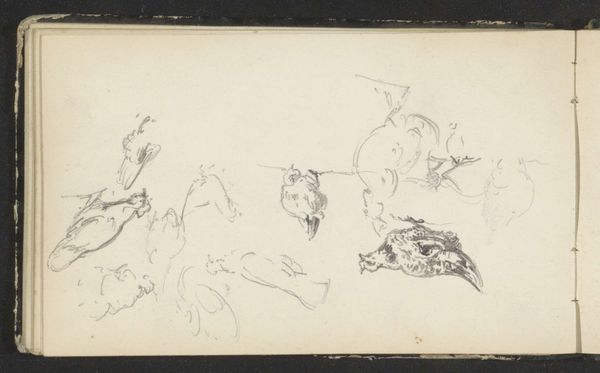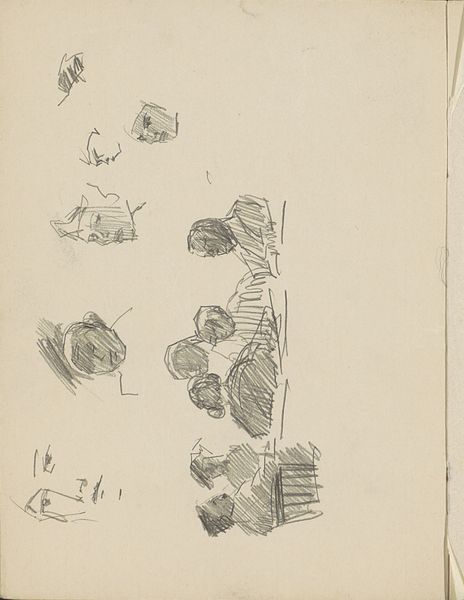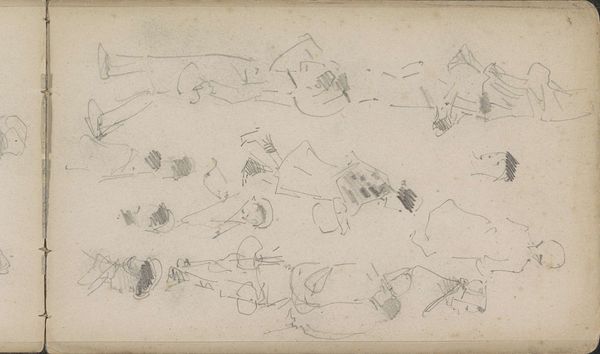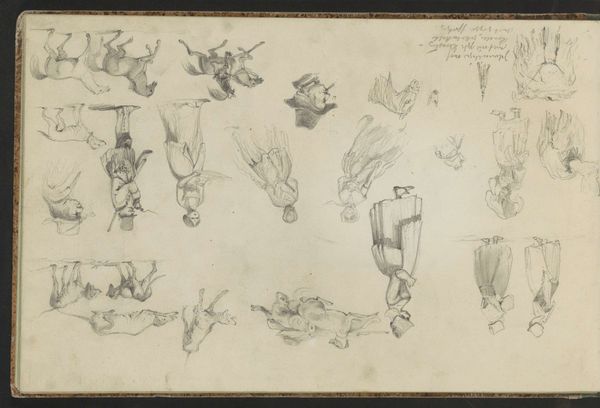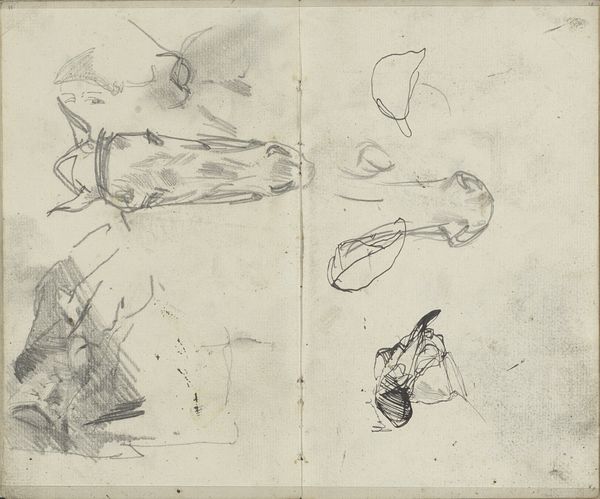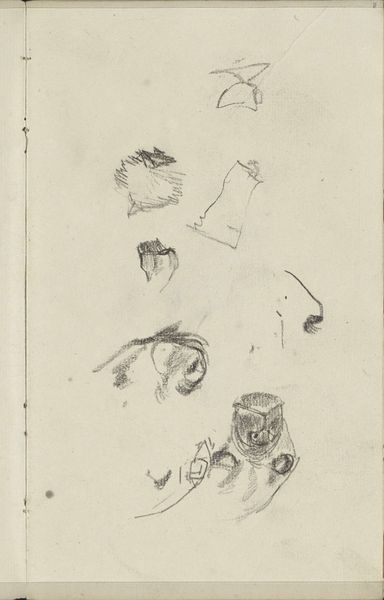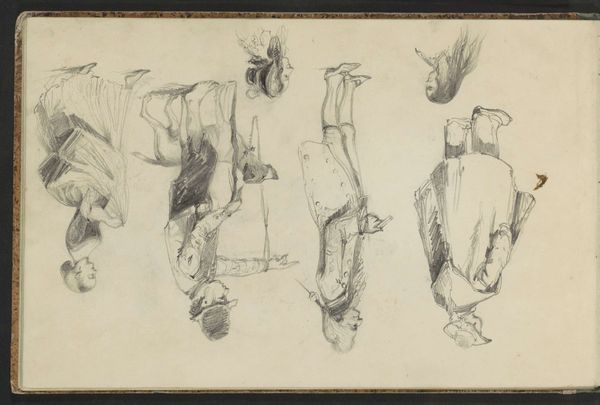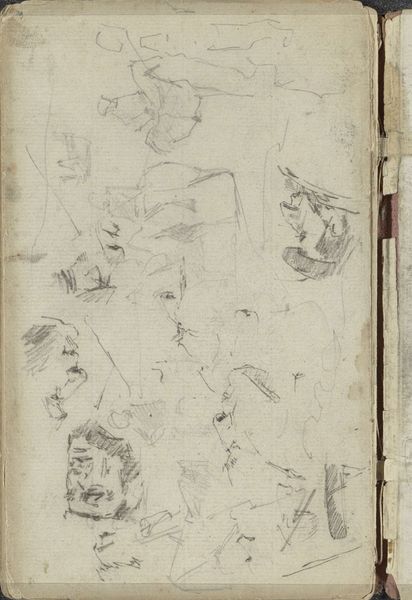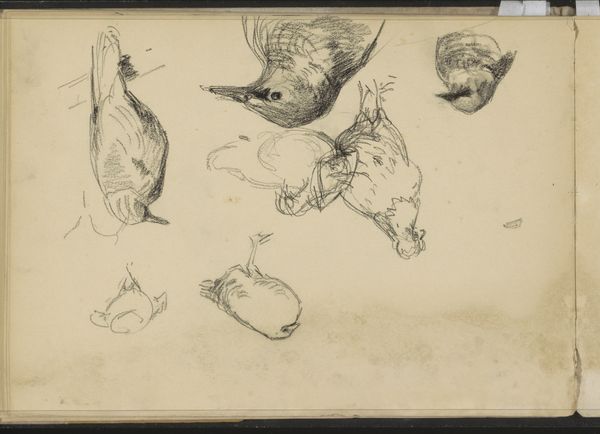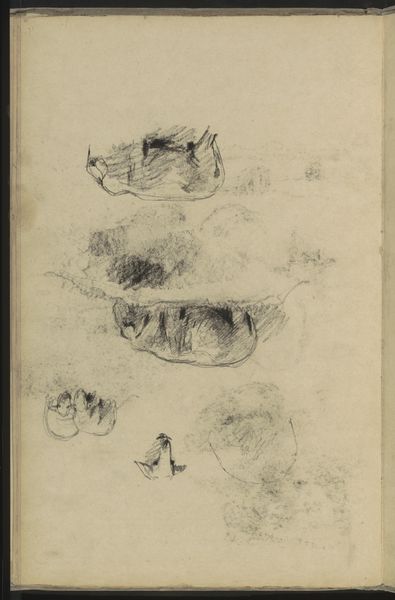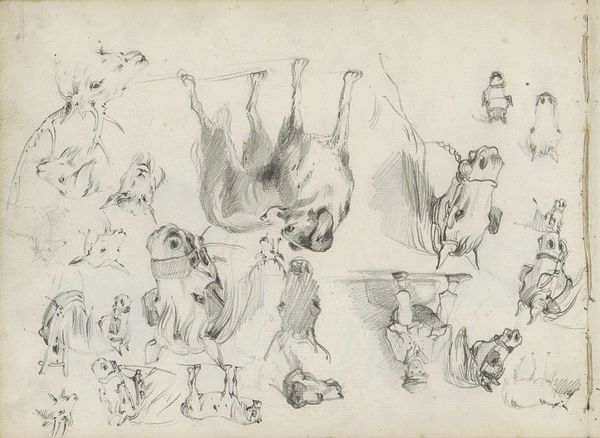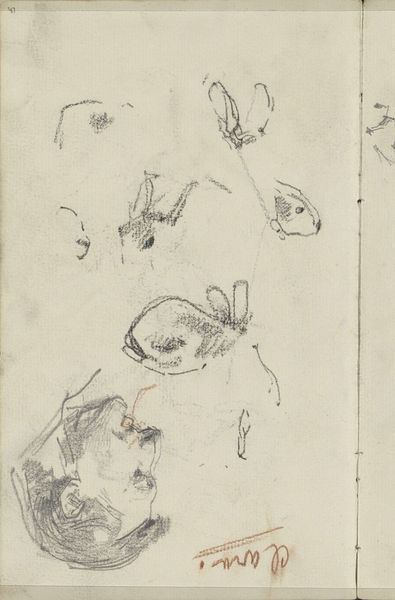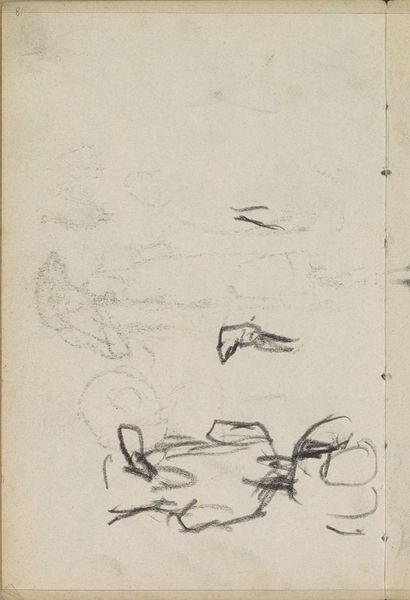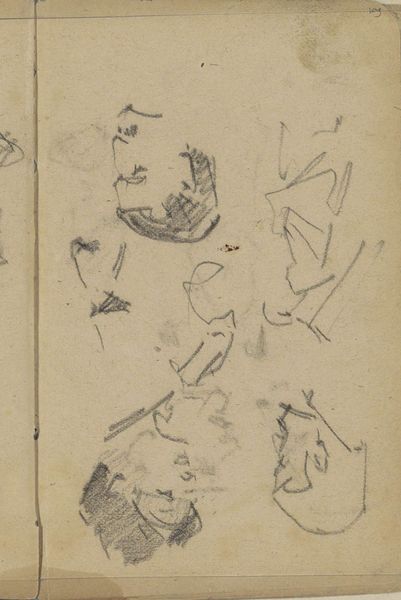
drawing, paper, pencil
#
portrait
#
drawing
#
pen sketch
#
pencil sketch
#
figuration
#
paper
#
pencil
Copyright: Rijks Museum: Open Domain
Curator: Welcome to the Rijksmuseum. We’re standing before Willem Bastiaan Tholen’s “Mannen en vrouwen,” created sometime between 1890 and 1931. It's a pencil and pen drawing on paper. Editor: It feels unfinished, a flurry of faces and gestures capturing fleeting moments. There’s a certain raw energy, but also something very private about it, like looking at someone's personal sketchbook. Curator: Precisely. Notice the varied pressure of the pencil strokes, from the almost imperceptible lines defining the contours to the darker, more emphatic marks that suggest form and shadow. The composition is interesting as well—multiple figures arranged without a clear narrative link. Editor: It makes me wonder about the individuals depicted. Were they people Tholen knew? Were they models, or just sketches he made on the go, and what social or political climate shaped their experiences and opportunities, and ultimately Tholen's gaze in rendering their images? Curator: It is tempting to weave such narrative and situate Tholen, and perhaps these figures, historically and socially. I, however, find the composition, considered as a series of interconnected planes, more captivating. Notice the relationships, contrasts even, between areas of dense linework and more open spaces; between sharply defined forms and ethereal sketches. It offers a fascinating interplay of tonal variations and negative space. Editor: Absolutely, I cannot disagree. But to detach an artist from the context in which they work seems a fruitless endeavor, when considering a seemingly simple composition such as this, the historical context always brings another layer of understanding to any artwork. The way he uses pencil as medium seems both deliberate and deeply connected to societal constructs of that era. Curator: A fair counterpoint. And these pencil marks show considerable artistic dexterity. The immediacy of the medium contributes significantly to its aesthetic appeal. Editor: Thinking about art in dialogue with history helps us understand not just aesthetic choices but their meaning. Curator: Thank you for this stimulating reflection. Editor: Thank you for facilitating new ways of seeing.
Comments
No comments
Be the first to comment and join the conversation on the ultimate creative platform.
